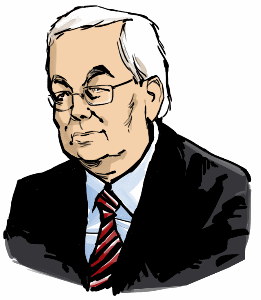© Gunnar Tómasson
19 June 2016
I. Quest of the Holy Grail
(Older form, Graal)
1795
1796 = Graal
-1 = Unknown Monad
1795
II. Ten Sefiroth of Kabbalah
(A History of God¹)
35850
2638 = En Sof – Without End/Guð í alheims geimi
3025 = Kether – Crown/Höfuð
2852 = Hokhmah – Wisdom/Vizka
1559 = Binah – Intelligence/Greind
1953 = Hesed – Love or Mercy/Ást eða Miskunn
1219 = Din – Power/Máttur
4209 = Tifereth – Beauty/Dýrð
3301 = (a.k.a. – einnig): Rakhamim –Compassion/Samkennd
3514 = Netsakh – Lasting Endurance/Varanlegt þolgæði
1261 = Hod – Majesty/Virðing
2434 = Yesod – Foundation/Undirstaða
3816 = Malkuth – Kingdom/Ríki
3392 = (a.k.a. – einnig): Shekinah – Guð í sjálfum þér
677 = EK – 13th Icelandic for EGO/Ég
35850
III. William Shakespeare‘s Quest
Alpha
(Ovid, Epigraph, Venus and Adonis, 1593)
36573
20165 = Vilia miretur vulgus; mihi flavus Apollo
16408 = Pocula Castalia plena ministret aqua.²
36573
I + II + III = 1795 + 35850 + 36573 = 74218
IV + V + VI = 721747 + 17980 + 64919 = 804646
804646 + 74218 = 878864
IV. Snorri Sturluson’s Mission³
(Saga of Icelanders, Ch. 38)
721747
30960 = Snorri Sturluson var tvá vetr með Skúla, sem fyrr var ritat.
27005 = Gerðu þeir Hákon konungr ok Skúli hann skutilsvein sinn.
17562 = En um várit ætlaði Snorri til Íslands.
21833 = En þó váru Nóregsmenn miklir óvinir Íslendinga
21084 = ok mestir Oddaverja – af ránum þeim, er urðu á Eyrum.
28575 = Kom því svá, at ráðit var, at herja skyldi til Íslands um sumarit.
20023 = Váru til ráðin skip ok menn, hverir fara skyldi.
29964 = En til þeirar ferðar váru flestir inir vitrari menn mjök ófúsir
9492 = ok töldu margar latar á.
19836 = Guðmundr skáld Oddsson var þá með Skúla jarli.
9518 = Hann kvað vísu þessa:
10580 = Hvat skalk fyr mik, hyrjar
10433 = hreggmildr jöfurr, leggja,
9371 = gram fregn at því gegnan,
10766 = geirnets, sumar þetta?
7230 = Byrjar, hafs, at herja,
8685 = hyrsveigir, mér eigi,
9377 = sárs viðr jarl, á órar
10173 = ættleifðir, svan reifðan.
20426 = Snorri latti mjök ferðarinnar ok kallaði þat ráð
18293 – at gera sér at vinum ina beztu menn á Íslandi
20845 = ok kallaðist skjótt mega svá koma sínum orðum,
28934 = at mönnum myndi sýnast at snúast til hlýðni vid Nóregshöfðingja.
22649 = Hann sagði ok svá, at þá váru aðrir eigi meiri menn á Íslandi
10908 = en bræðr hans, er Sæmund leið,
20937 = en kallaði þá mundu mjök eftir sínum orðum víkja,
7201 = þá er hann kæmi til.
25243 = En við slíkar fortölur slævaðist heldr skap jarlsins,
25030 = ok lagði hann þat ráð til, at Íslendingar skyldi biðja Hákon konung,
16818 = at hann bæði fyrir þeim, at eigi yrði herferðin.
18647 = Konungrinn var þá ungr, en Dagfinnr lögmaðr,
21877 = er þá var ráðgjafi hans, var inn mesti vinr Íslendinga.
22790 = Ok var þat af gert, at konungr réð, at eigi varð herförin.
28586 = En þeir Hákon konungr ok Skúli jarl gerðu Snorra lendan mann sinn.
17608 = Var þat mest ráð þeira jarls ok Snorra.
15904 = En Snorri skyldi leita við Íslendinga,
20988 = at þeir snerist til hlýðni við Nóregshöfðingja.
17859 = Snorri skyldi senda utan Jón, son sinn,
15777 = ok skyldi hann vera í gíslingu með jarli,
11960 = at þat endist, sem mælt var.
721747
V. Monad’s Manifestation at the Level of Man
(Saga-Shakespeare Myth)
17980
Monad’s Holy Sepulchre
1 = Monad
1000 = Light of the World
5979 = Girth House (Church of the Holy Sepulchre, Orkney Islands)
Monad’s Transformation/
Exit from The Holy Sepulchre
4000 = Flaming Sword
Manifested in Man/Creation
7000 = Microcosmos – Man in God’s Image/EK
17980
VI. EK, Author/Writer of Njála
(Saga Myth)
64919
Brennu-Njálssaga – M
Alpha
6257 = Mörðr hét maðr.
Section on Christianity
Alpha
12685 = Höfðingjaskipti varð í Nóregi.
Section on Christianity
Omega
11274 = Fara menn við þat heim af þingi.
Brennu-Njálssaga – M
Omega
13530 = Ok lýk EK þar Brennu-Njálssögu.
Come back home from Althing
Author
11359 = Snorri Sturluson
Writer
9814 = Sturla Þórðarson
64919
***
Calculator for converting letters to cipher values is at:
http://www.light-of-truth.com/ciphersaga.htm
¹ Background on Kabbalah
The most influential Kabbalistic text was The Zohar, which was probably written in about 1275 by the Spanish mystic Moses of Leon [who] believed that God gives each mystic a unique and personal revelation, so there is no limit to the way the Torah can be interpreted: as the Kabbalist progresses, layer upon layer of significance is revealed. The Zohar shows the mysterious emanation of the ten sefiroth as a process whereby the impersonal En Sof becomes a personality. In the three highest sefiroth – Kether, Hokhmah and Binah – when, as it were, En Sof has only just „decided“ to express himself, the divine reality is called „he.“ As „he“ descends through the middle sefiroth – Hesed, Din, Tifereth, Netsakh, Hod and Yesod – „he“ becomes „you.“ Finally, when God becomes present in the world in the Shekinah, „he“ calls himself „I.“ It is at this point, where God has, as it were, become an individual and his self-expression is complete, that man can begin his mystical journey. Once the mystic has acquired an understanding of his own deepest self, he becomes aware of the Presence of God within him and can then ascend to the more impersonal higher spheres, transcending the limits of personality and egotism. It is a return to the unimaginable Source of our being and the hidden world of sense impression is simply the last and outer-most shell of the divine reality. (Karen Armstrong, A History of God, Ballantine Books, New York, 1993, p. 247)“
² Christopher Marlowe‘s translation:
Let base conceited wits admire vilde things,
Faire Phoebus leade me to the muses springs.
³Briefly, in this account Sturla Þórðarson tells of Snorri Sturluson averting a military expedition to Iceland planned by the King of Norway because of lawless behavior by Icelanders. ”Snorri strongly discouraged the expedition and said that a better remedy would be to befriend the best men in Iceland and said that he could readily set forth his words in such manner that Icelanders would consider it advisable to become obedient to the chieftains of Norway.”
Background on Snorri Sturluson
Sigurður Nordal, the pre-eminent Icelandic Saga scholar of the 20th century, construed this account as an historical account of actual events. Another Saga scholar, Vilhjálmur Þ. Gíslason, summarized and commented on Nordal’s construction of the record as follows (my translation): ”Nordal’s description [of Snorri Sturluson is much better known among Icelandic readers [than descriptions by foreign scholars].
Snorri was admittedly free from various worst faults of his contemporaries, Nordal says. He was not cruel and not directly involved in acts of terror. He lived a most diverse life. But he lacked nobleness and boldness and was without personal courage. He was pushy and stingy, but not a miser. Conflicting urges were at war within him. His actions and talents are not applied in the same direction. He wants to be a potentate, but does not have the talents for that. He is a man of many moods and his emotions are shallow and transient. He lacks consistency and perseverance. Yet he was too coldly calculating. He was ambitious, but vacillant in his aims and compliant. He could let pure superficiality suffice for him, to seem but not to be. His comportment could lack grandeur and nobleness. His many moods weakened his will, but were an excellent soil for diverse gifts and made it easy for him to recreate in his mind the thoughts of other people. Yet he did not become a great poet because he wrote his poems according to the rules of an art which had long since passed its prime, and inspiration fails him when he speaks from within himself. He was more adept of forming treasures out of scrap silver than to fetch the metal from the rock himself. He is not a pioneer but rather an inheritor. Finally Nordal considers that [Sturla’s writings] are rather biased in Snorri’s favor and reports on him favorably, or is rather on his side.
Much in these descriptions of Snorri [by Nordal and others], who now were mentioned. Is written based on knowledge, verve and eloquence. But now they also need to be revised in parts where they seem to be inconsistent with sources, or describe unfairly Snorri’s character and work. (Vilhjálmur Þ. Gíslason, Snorri Sturluson og Goðafræðin/Mythology, Reykjavík, 1941-1942, pp. 160-161.)
Comment
Apparently, neither Nordal nor Gíslason appear to have suspected that the personal characteristics ascribed to Snorri Sturluson by Sturla Þórðarson are generally consistent with those of mythical Man-Beast whose “hour upon the stage” ends with Snorri’s “murder” on the night of Autumnal Equinox, 23 September 1241.
A symbolic “act” that signals the “death” of Old Adam – better known in Saga Myth as the alter ego of Sturla Þórðarson, his namesake Sturla Sighvatsson – and the “birth” of New Man/EK.

 Gunnar Tómasson
Gunnar Tómasson